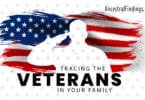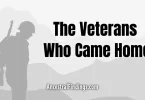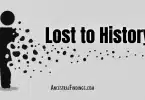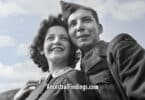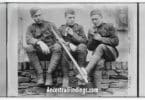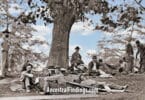Some families have stories that begin with war but continue through decades of work that followed. A man who served in a supply battalion later owned a hardware store. A woman who drove an ambulance in Europe spent her post-war years as a nurse. A quiet grandfather who never spoke about the war was known around town as the best electrician anyone had ever seen.
These are more than coincidences. They’re professional paths shaped directly by military service — by what veterans learned, endured, and adapted.
This part of the Second Lives series explores how veterans took what they knew in uniform and made it into a trade, a business, or a second life they never expected.
Military Training Meant More Than Combat
While wars are remembered for battle, many veterans never fired a shot. They built bridges. Repaired radios. Coded messages. Carried medical supplies. Operated cranes. Cooked meals for thousands. Drove trucks over dangerous mountain passes. And when the war ended, they brought those skills home.
In the Revolutionary War and Civil War, some of these tasks were informal — learned out of necessity and passed on with little paperwork. But by World War I and especially World War II, the U.S. military had begun creating formal training programs.
Some examples include:
- Signal Corps training in communications, leading to careers in radio and early television
- Army Corps of Engineers experience, leading to work in construction, surveying, or road building
- Medical corps training, creating a generation of nurses, medics, and lab technicians
- Clerical and administration roles, opening doors to office work, accounting, and civil service
- Motor pool and mechanical repair, which fed directly into the rise of the auto industry and home garages
- Aviation and aircraft mechanics, leading to work in commercial aviation and postwar flight schools
Even seemingly unrelated careers, like teaching or law enforcement, often began with wartime leadership experience. Veterans came home more confident, more disciplined, and ready to take on roles they might not have considered otherwise.
From the GI Bill to the Job Market
After World War II, the GI Bill (formally the Servicemen’s Readjustment Act of 1944) changed everything. It gave veterans access to education, vocational training, and low-interest loans. In less than a decade, over 7.8 million WWII veterans had used it to attend college or technical school.
This created an explosion of:
- Electricians, plumbers, and HVAC technicians trained at vocational schools
- Teachers and school administrators, many of whom had never considered college before
- Entrepreneurs, using low-interest loans to start small businesses
- Union laborers, whose military experience gave them priority entry into skilled trades
- Government employees, hired into civil service positions during a postwar hiring boom
You might find records of your ancestor’s training or professional advancement in:
- College yearbooks (especially late 1940s–1950s)
- State archives with GI Bill enrollment records
- Newspaper articles about returning veterans attending school or opening businesses
- VA loan documents, especially for business or home purchases
- Social Security Applications, listing changes in occupation over time
The Korean War and Forgotten Professions
Veterans of the Korean War often get overlooked in family histories. Many came home quietly, without parades or much national attention. But they returned with skills similar to those of WWII veterans — and they too used them to shape their careers.
Because the Korean War occurred just after WWII, many job sectors were already booming, and veterans stepped into those openings seamlessly.
Look for:
- Factory employment records in steel, auto, and textile industries
- Union membership cards
- Teacher certification or trade licenses earned between 1953–1960
- Interviews or retirement notices mentioning military service
Don’t overlook these quieter ancestors. Their professional lives may seem unremarkable at first glance, but service records and career moves often reveal a direct line from uniform to paycheck.
Women Who Turned Wartime Roles Into Lifelong Work
During both World Wars, women filled essential military and civilian support roles — as nurses, codebreakers, clerks, translators, and factory workers. Some even worked in aviation support or intelligence. Many of these women didn’t go back to domestic life when the war ended.
Instead, they:
- Became registered nurses or public health workers
- Continued working in government offices
- Taught school, often in rural communities
- Joined telephone companies, banks, or insurance firms
- Ran family businesses or opened their own shops
If you had a great-aunt who never married and always seemed “ahead of her time,” the war may have been the spark that launched her independence.
When Military Skills Didn’t Translate
Sadly, not every veteran got to use what they’d learned. Some faced discrimination. Black veterans returning from WWII often found they couldn’t get hired in the trades they mastered overseas. Immigrant and Indigenous veterans were sometimes forced back into the same labor roles they’d left behind. And women were pushed out of jobs they’d held during the war.
That makes paper trails more complex — but not impossible.
Look for:
- Letters of complaint or petitions, especially in local archives
- Veterans who took labor or domestic work despite high rank in service
- Descendants with oral histories about unfair hiring or lost opportunities
- Business ownership records, which may show that veterans took control of their own destiny instead of waiting to be hired
Their postwar jobs may not reflect what they could do — but that disconnect tells part of the story.
Tracing Careers Across Records
When trying to trace your ancestor’s professional life after service, try pulling together these sources:
- Census records (especially 1930, 1940, and 1950 for occupation data)
- City directories, showing title or trade
- Employment records from railroads, steel companies, and mills
- Newspaper ads or classifieds (they may have advertised services)
- High school or technical school reunion booklets
- Trade association rosters
- Social Security Applications (SS-5 Forms) showing work history
- Obituaries, which often list career highlights, union memberships, or businesses owned
Don’t forget to ask family members. Many postwar professions passed down — tools, stories, even the family business. A grandson who’s a carpenter today might be standing on the shoulders of a WWII vet who picked up a hammer in the Army and never put it down.
A Life Shaped by What They Learned
Postwar professions didn’t just pay the bills. They defined identities. They helped veterans re-enter society with purpose and pride. For many, their trade became their legacy — passed on in skill, reputation, or example.
When you find that electrician, nurse, machinist, or teacher in your tree, look a little closer at when they started, and howthey got there.
The answer may be found in a war they survived — and a life they built after it.

